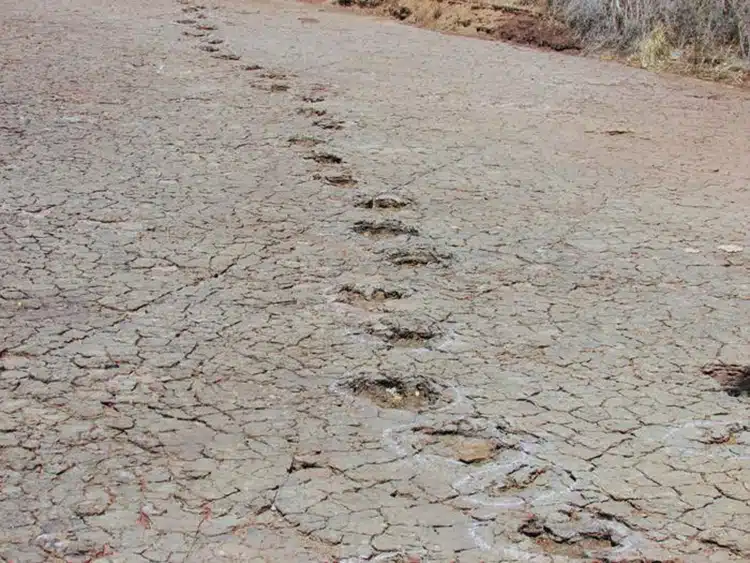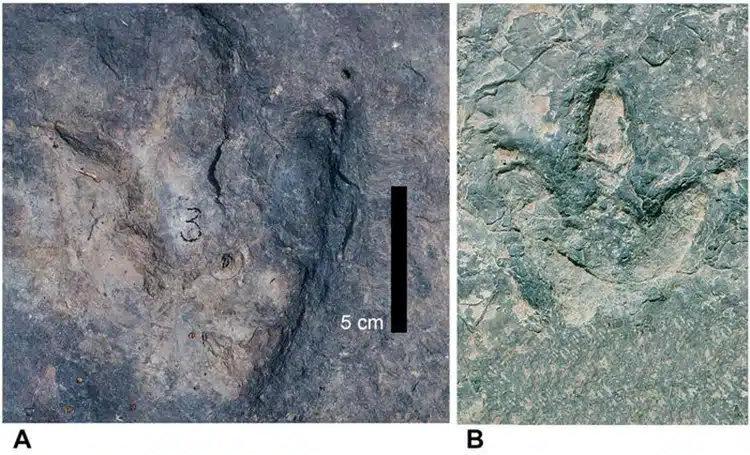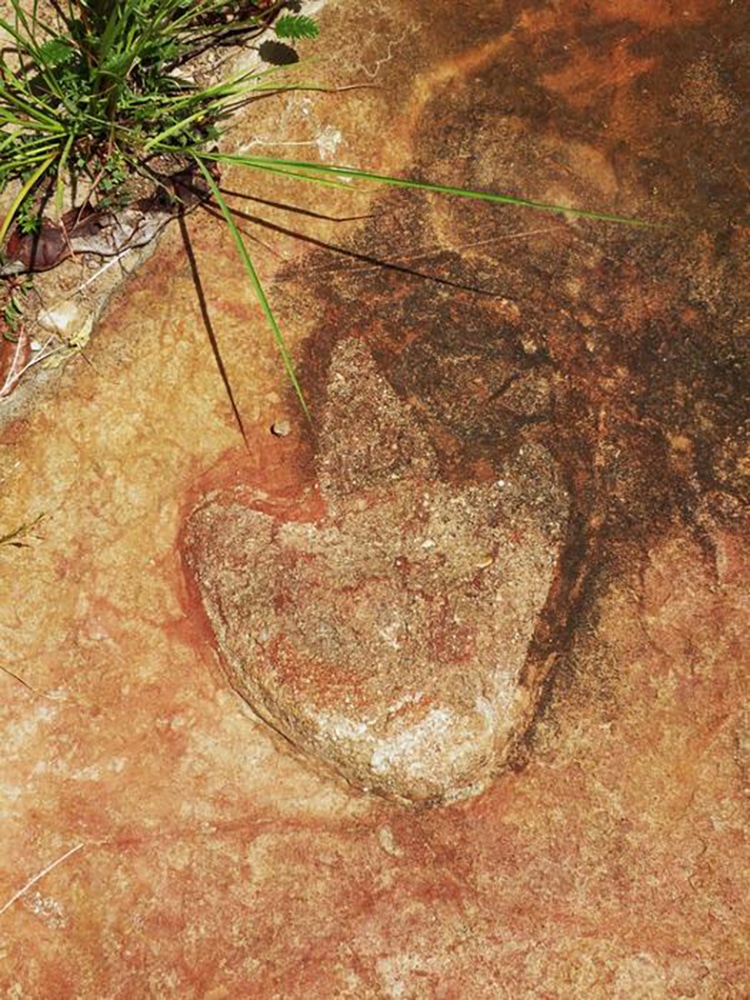
Ornithopod tracks at Sousa Basin. (Photo: Ismar de Souza Carvalho)
Millions of years ago, our seven continents were squished together in a supercontinent, one giant land mass known as Pangea. When Pangea began to break up, it eventually produced chunks of land that—though separated by oceans—once fit together. Most obviously, South America and Africa fit together like puzzle pieces, reminiscent of the post-Pangea continent named Gondwana that they once formed. Evidence of this historic connection between the landmasses can be seen beyond the map. A new study led by Southern Methodist University paleontologist Louis Jacobs discovered the matching tracks of dinosaurs in Brazil and Cameroon, which were left by one group of long-lost critters.
In the study published by the New Mexico Museum of Natural History & Science, the researchers documented 260 dino prints in the two countries. They are very similar, and they belong primarily to theropod dinosaurs. This group of three-toed dinosaurs include the Tyrannosaurus rex. They also noted the presence of sauropods or ornithischians. The footprints, known as trace fossils, are preserved in rock that solidified from sandy silt in prehistoric rivers. When the tectonic plates carrying the continents were propelled apart in continental drift, the prints of the roving dinosaurs were separated.
“One of the youngest and narrowest geological connections between Africa and South America was the elbow of northeastern Brazil nestled against what is now the coast of Cameroon along the Gulf of Guinea,” Jacobs notes in a statement. “The two continents were continuous along that narrow stretch, so that animals on either side of that connection could potentially move across it.
We determined that in terms of age, these footprints were similar. In their geological and plate tectonic contexts, they were also similar. In terms of their shapes, they are almost identical.”
While the prints may now be separated by an ocean, their history is closely entwined.
Paleontologists have discovered matching dinosaur tracks in Brazil and Cameroon, demonstrating the prehistoric connection of the now separate continents.

Tracks from the Koum Basin in Cameroon. (Photo: Ismar de Souza Carvalho)

Ornithopod tracks at Sousa Basin in Brazil. (Photo: Ismar de Souza Carvalho)
h/t: [Gizmodo]
Related Articles:
Meet the Lokiceratops, a Dinosaur With Unique Horns
9,000-Year-Old Petroglyphs Reveal Early Humans Knew About Dinosaurs
3,000 People in Dinosaur Costumes Gather in Public To Break a World Record
Stegosaurus Worth $45M Becomes the Most Expensive Dinosaur Fossil Ever Sold at Auction
